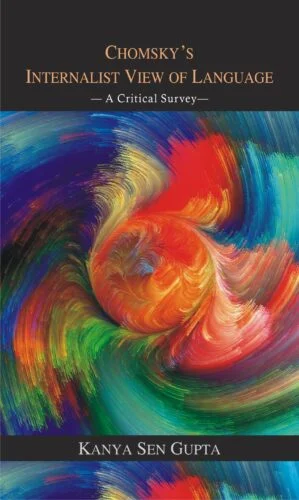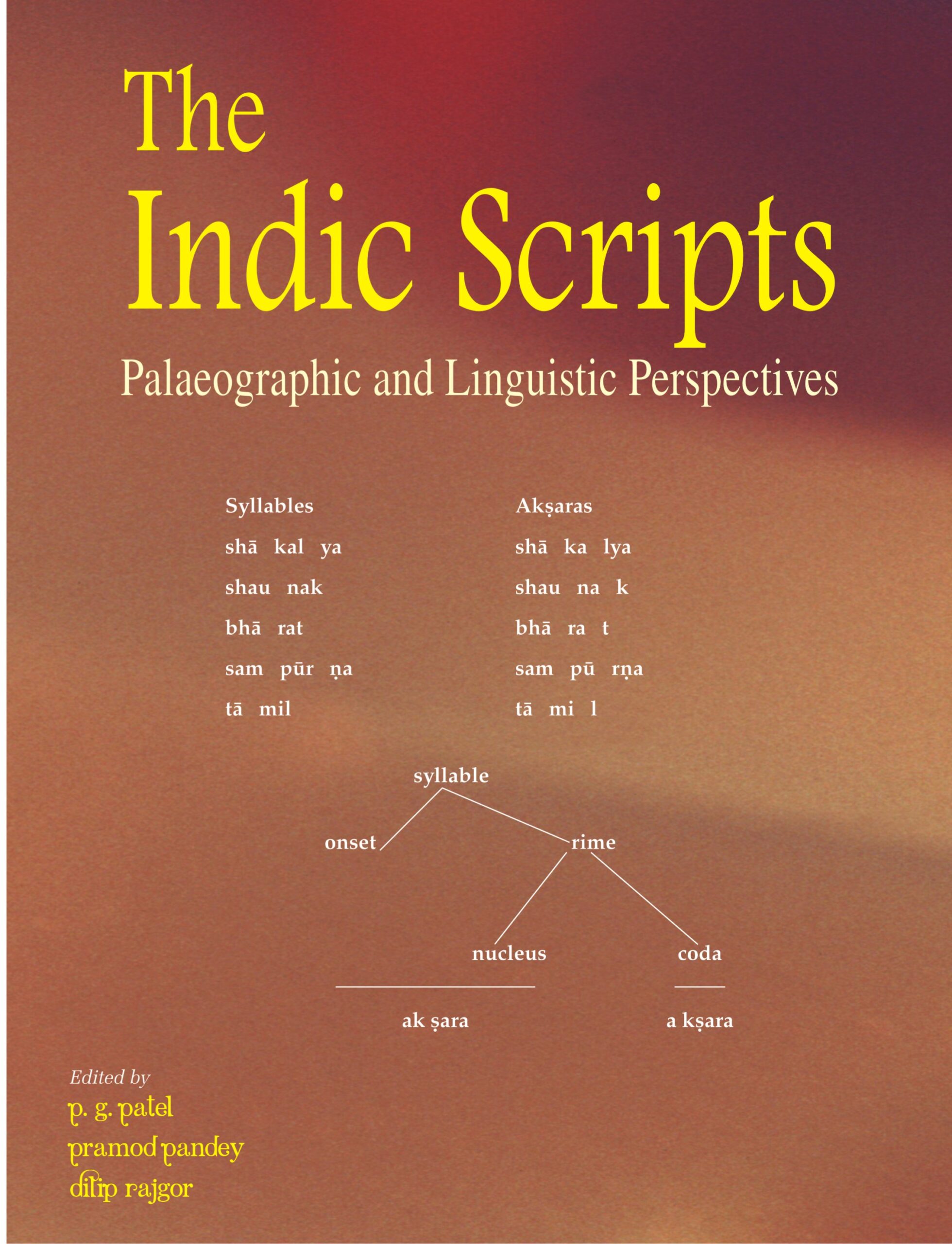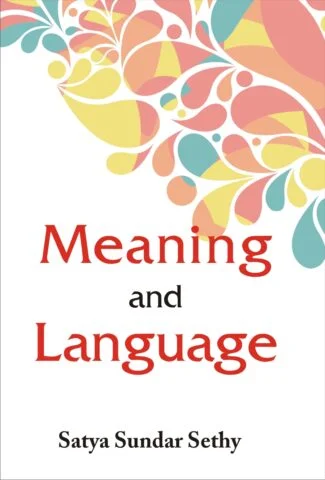Showing 1–12 of 62 results

This Dictionary of Hindi Apabhramsa gives in detail the grammatical importance of words, their meanings, correct spellings, the alternate words and their various usages as mentioned by lexicographer Naresh Kumar.
This Dictionary of Hindi Apabhramsa gives in detail the grammatical importance of words, their meanings, correct spellings, the alternate words and their various usages as mentioned by lexicographer Naresh Kumar.

Atreyashiksha holds a unique position in the corpus of the Shiksha literature. It shows that the main aim of the text is to explain the practical aspects of the different ways of Vedic recitation, in whose connection it describes the theoretical elements of Shiksha too. The phonological rules, most of which are expressed in the Taittiriya Pratishakhya, are also illustrated in this text.
Atreyashiksha is one of the Shiksha texts of the Krishna-Yajurveda, Taittiriya school. This text has been critically edited and translated consulting two palm-leaf manuscripts which are currently the only discovered manuscripts of this text in public libraries. Shiksha texts deal with phonetics and phonology of the Vedas and the method of proper pronunciation and recitation. The Atreyashiksha is well-structured in terms of arranging its topics of discussion.
When compared to the other Shikshas of the Taittiriya school, the Atreyashiksha, in keeping its focus on the discussion on the different methods of Vedic recitation, namely, word-reading (padapatha), sequential reading (kramapatha), tangled reading (jatapatha) and the five varieties of the reading of the phonic sequences (varnakramas), holds a unique position in the corpus of the Shiksha literature. A close reading of the text shows that the main aim of the text is to explain the practical aspects of the different ways of Vedic recitation, in whose connection it describes the theoretical elements of Shiksha too.
The book, therefore, serves as a practical guidebook to Vedic reciters who recite the above-mentioned readings of the Taittiriya Krishna-Yajurveda along with the continuous reading. While describing the methods of recitation, the Atreyashiksha gives enough emphasis on the theoretical nuances. The phonological rules, most of which are expressed in the Taittiriya Pratishakhya, are also illustrated in this text. This book consists of a detailed introduction, the critically edited text in Devanagari script, its Roman transliteration and an authentic English translation.
Renowned Vedic scholar, Pandit Madhusudan Ojha has presented in this volume a rich and ancient history of our world and civilization.
Jagadguruvaibhavam, the final part of the trilogy authored by Ojhaji on various facets of Creation, is as much an insightful work on the Vedic knowledge contained in the Vedas and Puranas as also an exceptional example of his profound knowledge and wisdom. Indravijayah (Bharatavarsha: The India Narrative in English) and Devasurkhyati are the first two volumes on the subject.
The Brahma’s Universe: The Chronicle of Creation is the English translation of Jagadguruvaibhavam prepared by a board of editors at Shri Shankar Shikshayatan headed by well-known Indologist, Prof. Kapil Kapoor.
Brahma is the central character of this book and through his forms, age and abode, Ojhaji has outlined the story of our universe’s evolution. It was Brahma who perceived that, in this world, the source of energy is the surya or sun. All spiritual, metaphysical and supraphysical energies exist in the surya. The vital energy (prana), which gives life to all beings too is produced from the sun. Brahma recorded all these in granthas (volumes) that came to be known as the Vedas.
Written in verse form, the volume offers a unique rendering of the creation of atma, veda, praja and dharma. Ojhaji presents a remarkable insight into the ancient knowledge on rivers, mountains, eras and communities like Sadhyas and Manijas.
Brahma’s Universe is more than a companion book of Bharatavarsha: The India Narrative. It expands the magnificent narrative of Creation, offers broader meaning to Vedic terms and illuminates the profound wisdom contained in the Vedas.
This book develops a consilience of research and thinking in epigraphy, archaeology, and linguistics on the Indic Brahmi writing system. Its objective is to identify the problems that need to be tackled by anybody who tries to develop a theory of the Brahmi writing system. As for the currently scientifically supported hypothesis that Brahmi originated in Tamil Nadu during the sixth century BCE or earlier, Patel opts for the need to keep this as an idea for the working basket awaiting new archaeological research in the sixth-century Magadha region.
The book deliberates upon how ancient Tamil Nadu was receptive to literacy. The Brahmanical fascination for orality blocked literacy in Vedic India. The brahmanas from north India entered Tamil Nadu only during the third century bce and lived away from residential areas. Tamil Nadu at the time had no caste system. This is reflected in the Sangam literature, which followed historically the grammarian Tolkappiyar. The conditions in Sri Lanka before and after the arrival of Buddhism are noted in relation to the rise of literacy. The relationship between Brahmi in Sri Lanka and Tamil Nadu is highlighted for the purpose of further research. Also noted is the need for research on the differences between Dravidian and northern scripts in the way the aksharas are formed in graphic representation.

This book analyses Chomsky’s philosophy of language in the context of its difference from Wittgenstein’s account of language, and also other views of language which are in line with Wittgenstein explanation. And it aligns with the philosophy of Wittgenstein and his colleagues.
This volume endeavours to get at Chomsky’s philosophy of language in the context of its difference from Wittgenstein’s account of language, and also other views of language which are in line with Wittgenstein explanation. Since Chomsky’s preference is grammatical or structural approach to language, which is innate, he interprets knowledge of language as knowledge of rule-governing sentence formation. Obviously, Chomsky approves of Private Language with no concern for the theory of communication which is rooted in the use of language. In other words, Chomsky is not interested in successful communication which takes place only in social practices. But, according to what we have discussed in this book, successful communication or speech act is possible by what people normally do according to social convention.
In short, since Chomsky depends upon the structure or innateness of internalist approach to language, he cannot be accounted for social interpretation of language, which is needed for successful communication. As in this book, we are committed to public or socially approved language of Wittgenstein and his colleagues which is essential for communication, we walk away from Chomsky’s structural or mentalistic or innatist interpretation of language.

This dictionary provides meaning of Pali words in Sanskrit, Hindi and English. It will certainly prove useful to the learners of Pali language, students, scholars and researchers of Buddhist Studies, Pali Canons, and to those whose work is based on Pali.
As the teachings of the Buddha and the main Buddhist literature in original, as well as in translation, are contained mainly in Pali and Sanskrit languages, apart from Tibetan and Chinese as well, knowledge of Pali and Sanskrit is always essential to study the core of Buddhism — its basic teachings — and understand its basic concepts and perceptions. This voluminous edition has been offered in order to aid in the knowledge of the Pali and Sanskrit languages. Simple to comprehend and laying stress on clarity of meaning, the dictionary presents the Pali word at the beginning of each entry and gives its synonym in Sanskrit within bracket. It then proceeds to furnish the meaning of the word in both Hindi and English. The attempt is to make the dictionary useful to learners of the language and as a guide to those who are researching Buddhist works.
The book is meant to be a study companion to students and scholars of Buddhist Studies. It will be an indispensable aid to the readers and researchers of Pali Canons and works based on Pali and Sanskrit languages.
Leonard Bloomfield described Panini’s Ashtadhyayi (7th century bc) as ‘one of the greatest monuments of human intelligence.’ It is a complete, explicit and comprehensive grammar of both spoken and textual (compositional) Sanskrit. Most of the reputed and renowned Indian and foreign universities running courses on Indian knowledge systems, study it for its principles of analysis, organization and description. What is of great interest is the theoretical framework that informs this grammar, a framework that has remarkable power to describe human languages, particularly the Indian languages.
Panini is the watershed in the linguistic history of India. Before Panini, there was extensive work in phonetics, in morphology and lexicon (in the patha tradition) and in nirvacana (etymology). There is evidence also of the existence of several schools of grammar. In what is characteristic of the Indian intellectual traditions, Panini distilled the available grammatical knowledge and put it in 32000 syllables — as if, it has been said, an ocean has been accommodated in a cow’s hoof-mark. After Panini, a whole tradition developed and produced rich works by Patanjali, Candrakirti, Jainendra, Bhartrihari, Bhojraja, Hemacandracarya, Bhattoji Dikshita, Nagesha Bhatta and many others. It also inspired work in literature and philosophy and has left its mark on the entire intellectual tradition. In the modern period, there is a spread of Ashtadhyayi studies round the globe and it has proved to be of great interest for the study of knowledge representation in the departments of system sciences.
A comprehensive study of the different dimensions of this wonderful grammar enlarges and alters the conceptual horizons of young minds and of all those who care to be associated with the Indian grammatical systems. This book is a record of that adventure.
Philosophy in this set of two volumes is a cognitive activity par excellence. Cognition is that the language expresses and it reveals intelligible objects/beings of language and the meaning to which our philosophical reflections, investigations, analysis and interpretation are not only based on but are confined to. The work is fit for satisfying the intellectual hunger of those who are sick of reading the same metaphysical, ontological, theological and epistemological descriptions in different books of history of philosophy, Indian and Western, to those searching a philosophy free from our captive thinking and also an innovative vision to meet out the new challenges in philosophy. Concentrating on cognition as it flashes by language the book analyses, discusses, interprets and critically argues most of the philosophical issues and their responses by Indian and Western philosophical traditions well conclusively.
Unlike linguistic and analytic philosophies, the book is a philosophy of language. Unlike meaning-centric philosophies popular in the East and West, the language-centric approach of the book is based on the expressive nature of language. Based on cognition as it flashes, on active theory of knowledge and action-oriented view of language and its meaning, it reflects on problems, doubts, paradoxes and queries for clarity and resolve, and on that basis, utility and future of philosophy as well.
Against philosophy as subjective and objective thinking, it is a cognitive reflection par excellence. These volumes cover the courses of philosophy prescribed in the universities and colleges useful for scholars and students and those who want a fresh perception to come up with the new challenges in philosophy.

This Volume is the first attempt to cross-fertilize palaeography and linguistics in the ongoing research on Brahma and its daughter scripts used in the present-day India. The palaeographic papers cover the main issues in the decipherment of the Indus Valley script, and the linguistic papers explore the issues of the roots of the orthographic unit akshara in Vedic phonetics. Palaeographers epigraphists, linguists and computational scientists, will find this volume interesting and useful.
This volume presents the advances in the ongoing research on Brahmi and its daughter scripts used in the present day India. It brings together two main trends: evolutionary-historical development and linguistic grounding. This is the first attempt to cross-fertilize palaeography and linguistics. The palaeographic papers cover the main issues in the decipherment of the Indus Valley script, the origin and evolution of Brahmi, and the palaeographic methods and considerations employed in the decipherment of scripts. These present different trends and arguments of writers on the origin of Brahmi as having been around the Mauryan era or at a much earlier stage, relate to broader historical and cultural issues. They also deal with the need for the use of established and more current palaeographic techniques in classifying regional and stylistic variants of scripts. The linguistic papers in the volume explore the issues of the roots of the orthographic unit aksara in Vedic phonetics, its claim as a minimal articulatory phonetic unit, and the properties of Brahmi as a generative writing system. The philosophical and linguistic underpinning of the concept aksara is shown to thread its use in the varieties of treatises, from the Vedas to phonetic texts. The papers help in providing linguistic evidence for historical accounts of the script as an invention at a given time or as an evolving evolutionary system, apart from relating the development of the script to the linguistic history of India. Palaeographers epigraphists, linguists and computational scientists, will find this volume interesting and useful.

The book focuses on the structure and limits of linguistic representations from both the Indian and Western perspectives. From communicative meaning to meaning in trzuth-based semantics and also in hermeneutic interpretation of language, there are a wide range of issues which have been discussed in detail.
The essays in this volume deal with the nature of linguistic representations as distinguished from other types of representations, including mental representations. These study language and linguistic representations, examining crucial questions like nature of language and language as a source of knowledge, accommodating linguistic representations within the broad framework of truth-based semantics and hermeneutic interpretation of language. The essays focus on the structure and limits of linguistic representations from both the Indian and Western perspectives. The semantic problems of meaning, reference and truth constitute the main issues facing any theory of linguistic representations and, therefore, these issues have been discussed in-depth. Besides, there has been an effort to understand how to locate the language-reality relationships within a broad representationalist framework. The essays take up many specific topics, examining theories of linguistic representations, such as the anti-representationalist stand of Wittgenstein and Derrida, Grice’s theory of meaning, and perspectives of Indian classical schools such as the Naiyayikas’ perspective on testimonial knowledge. The essays specially focus on the Indian theories of grammar and linguistic representations to highlight how philosophy of language, whether classical or contemporary, can hardly get rid of the semantic locus of meaning and truth.
The volume will prove invaluable to scholars of philosophy, especially those concerned with language and linguistic representations.

The book, consisting of original research papers, could connect the results of the work done in the past with the work to be done in the future towards a fuller and sharper understanding of Kashmir’s analytical engagement with language.
The present volume mainly consists of original research papers. It is not a collection or anthology in which specialists of the different aspects of Kashmirian use or study of language were invited to write essays surveying the aspects best known to them or to produce state-of-the-art reports about the scholarly study of the aspects. An effort, however, has been made in the Introduction to provide the general background that a reader may need in order to situate the papers in the proper intellectual and historical context. The Introduction further outlines the themes that could and should be particularly explored to lead us to a fuller and sharper understanding of Kashmir’s analytical engagement with language. The appendices toward the end of the volume then complement the Introduction by presenting objective and practical information about the manuscripts etc. of works in Sanskrit. The volume could connect the results of the work done in the past with the work to be done in the future by adding to knowledge in the present because of the articles it attracted from veteran as well as upcoming researchers. The reader will find here discussions bearing upon texts, as well as discussions bearing upon the authors of texts; discussions devoted to elucidating single passages, as well as discussions exploring instances of intertextuality; and discussions exclusively addressing individual grammars, as well as discussions engaging in the relation of one grammatical school with another.

This volume is a study of two semantic perspectives meaning atomism and meaning holism. It mainly focuses on contrasting these perspectives or models of meaning and evaluates them from different philosophical standings to arrive at an explicit conception of meaning that will correctly reveal the semantics of natural language.
This volume explores the nature of meaning and the way it functions in language. Philosophers such as Aristotle, Thomas Acquinas, John Locke, Immanuel Kant and David Hume had keen interest in the study of meaning, though it was not central to their philosophical inquiry. But the contemporary philosophy takes a radical twist towards language which is characterized as linguistic turn in philosophy. Meaning and its correct characterization are the foremost concerns of contemporary philosophy.
Study of two semantic perspectives meaning atomism and meaning holism is the core content of this book and it mainly focuses on contrasting these two perspectives or models of meaning and evaluates them with a view to arrive at an explicit conception of meaning that will correctly reveal the semantics of natural language.
In doing so, it vividly discusses the two perspectives of meaning along with the atomistic theory of Gottlob Frege, Wittgensteins approach to meaning, logical positivists conception of meaning, why meaning atomism fails to capture the uniqueness of meaning, Quinian theory of meaning holism, Davidsons approach to meaning holism, and Later Wittgensteins view on meaning holism, thus covering a wide gamut of the topic.
| There are no products |